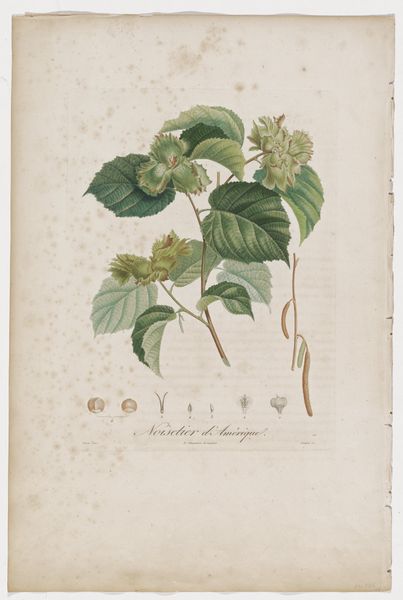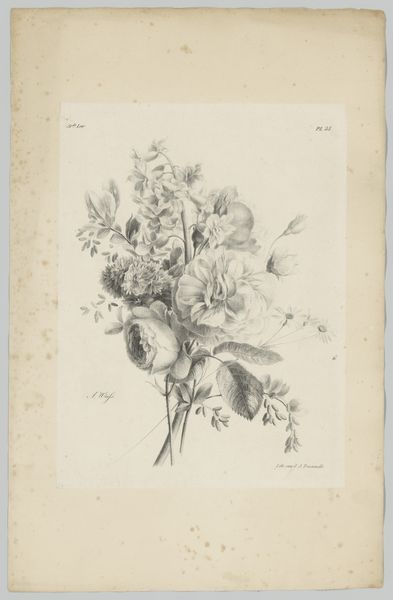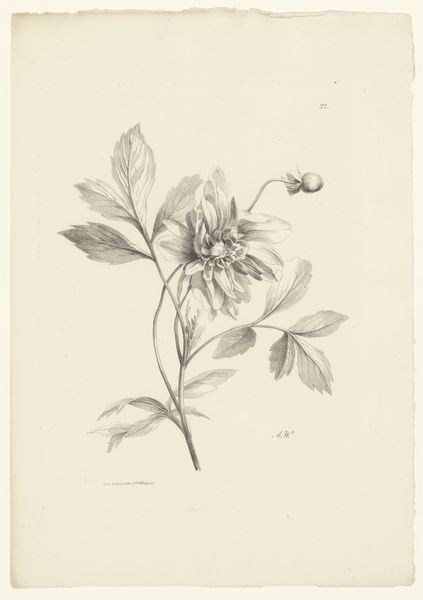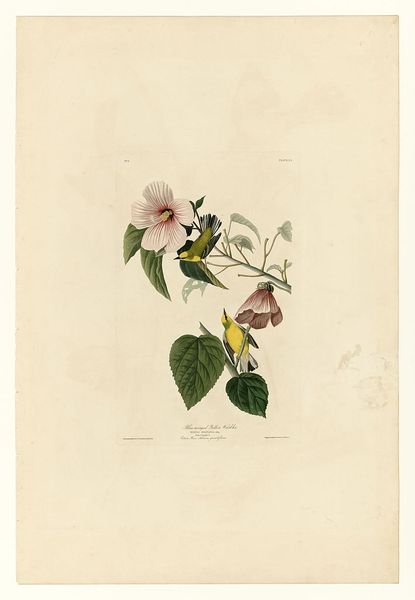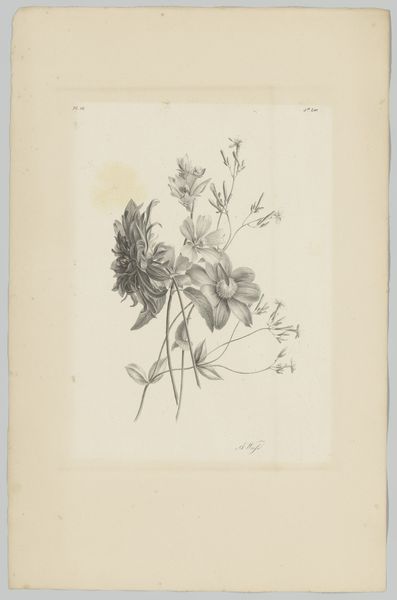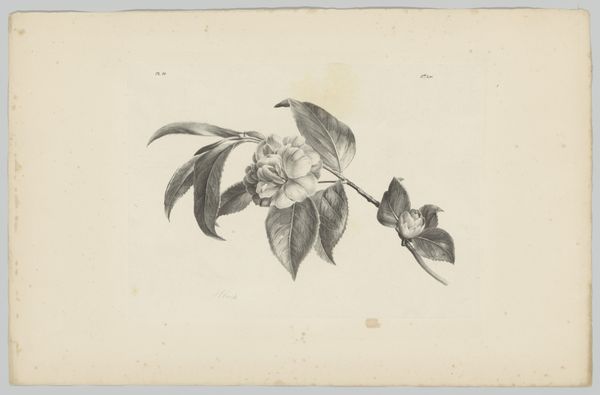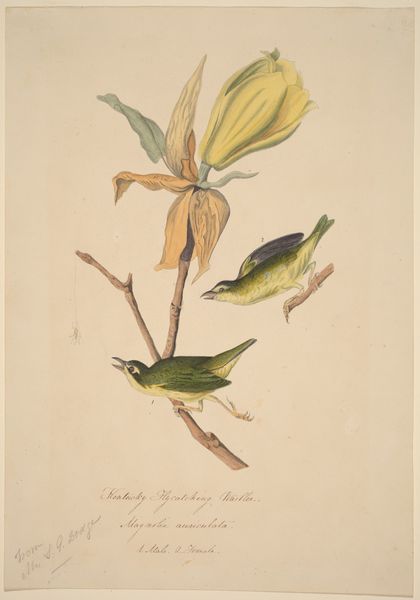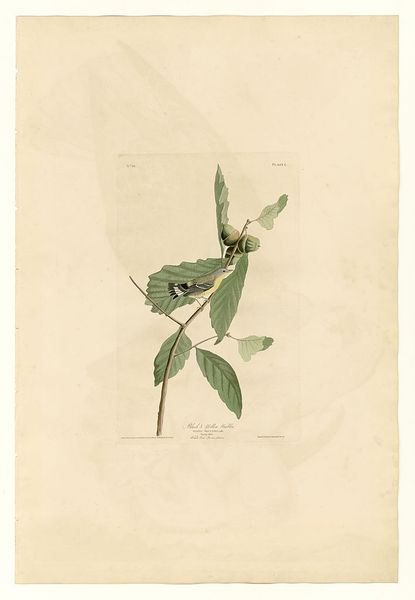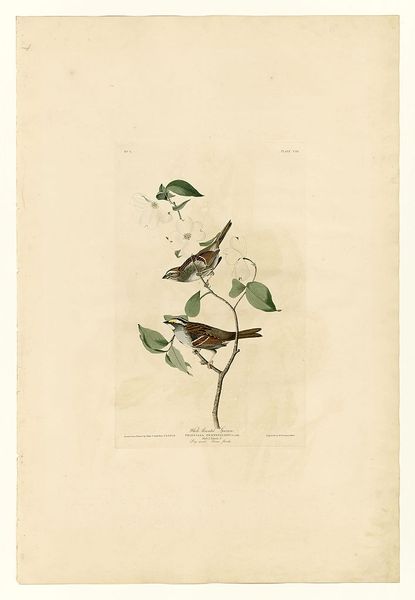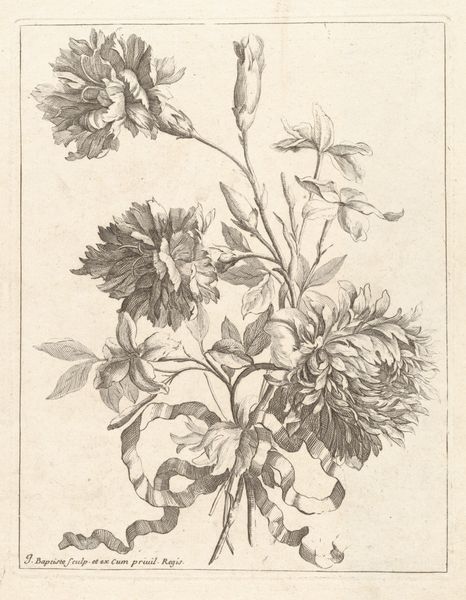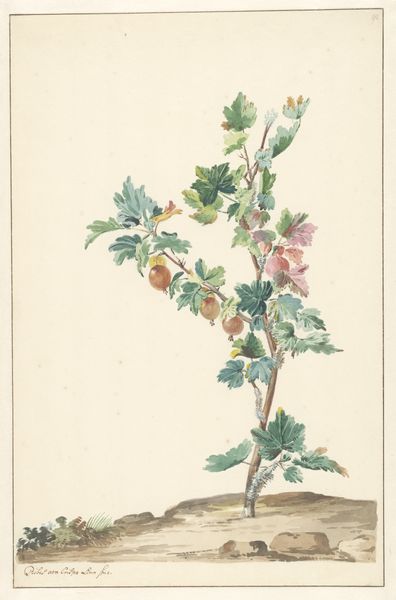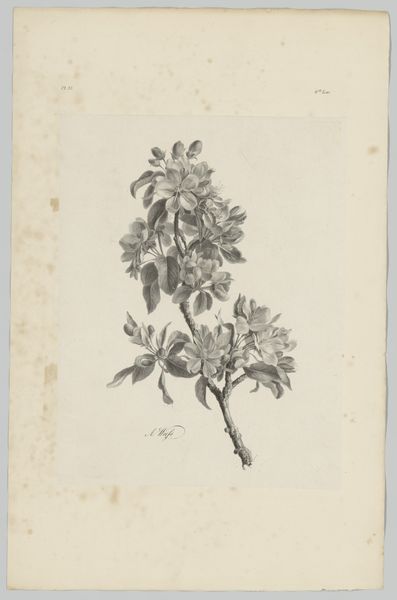
drawing, watercolor
#
drawing
#
botanical illustration
#
watercolor
#
botanical drawing
#
botanical art
#
watercolor
Dimensions: 218 mm (height) x 195 mm (width) (bladmaal)
Editor: This is P.C. Skovgaard’s watercolor and drawing, “Kvalkved (Viburnum),” created sometime between 1817 and 1875. It's a beautiful, delicate botanical study, but there's almost a melancholic feel to the faded colors. What draws your attention in this piece? Curator: The "faded colors," as you describe them, offer a lens into understanding how nature, and our perception of it, has been historically constructed. Nineteenth-century botanical art was deeply implicated in colonial projects; the very act of classifying and documenting nature was intertwined with exerting control over it. How might this delicate rendering reinforce or subvert such power dynamics? Editor: I hadn’t considered the colonial aspect. I guess I was just seeing it as a simple depiction of nature. Are you suggesting there’s a power dynamic inherent in how Skovgaard chose to represent this plant? Curator: Exactly. Consider the composition: the plant is isolated against a blank background, meticulously rendered. Is it celebrating the plant’s inherent beauty, or is it objectifying it, turning it into a specimen divorced from its broader ecological context? Whose gaze is being centered here, and what does that imply about the relationship between humans and the natural world? Editor: That makes me see it differently. So, by analyzing the seemingly simple composition and technique, we can unpack complex ideas about power and control connected to the plant. It moves it from simply being "beautiful." Curator: Precisely. Art allows us a means of entry and an access point to discussing critical themes of historical, social, and environmental implications through visual expression. It prompts critical dialogue. Editor: I had no idea how much there was beneath the surface! I definitely need to rethink my initial assumptions when looking at art from this period. Thanks!
Comments
No comments
Be the first to comment and join the conversation on the ultimate creative platform.

